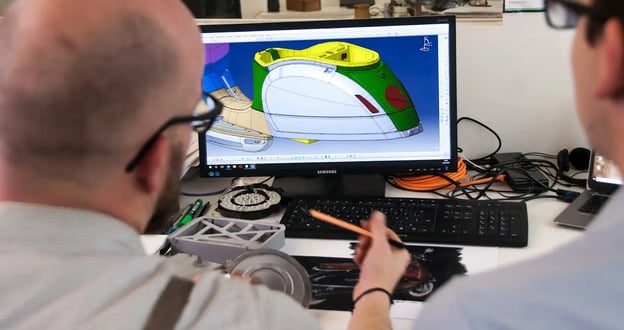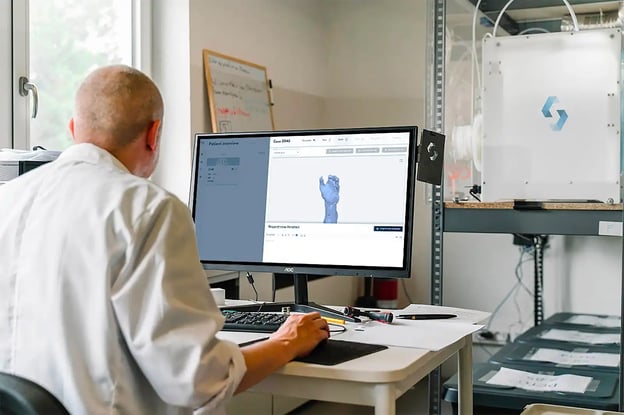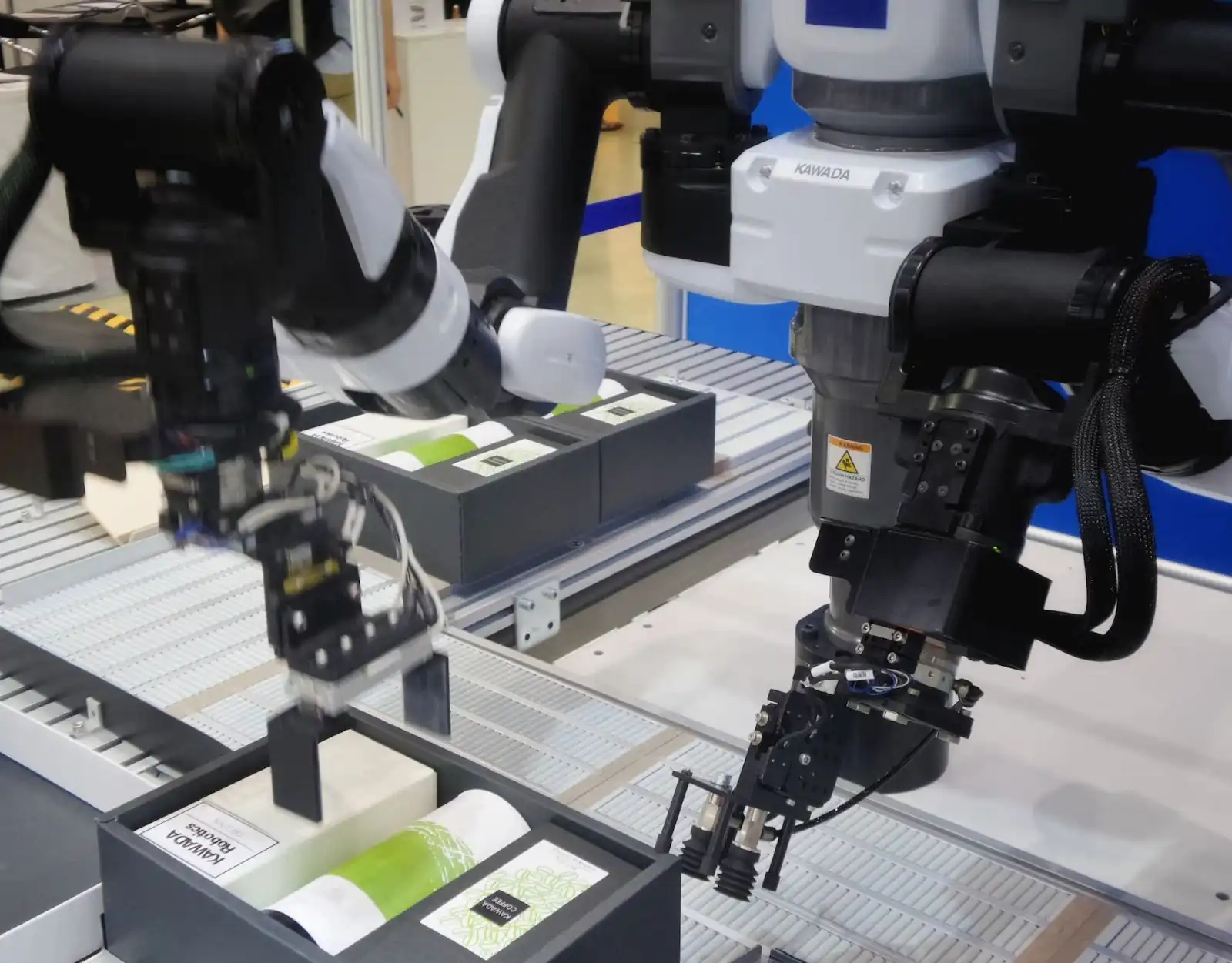Additive manufacturing is taking industries by storm, providing highly flexible manufacturing services. (Even the U.S. Navy joined the 3D printing digital revolution by printing parts for warships, reducing the need for inventory storage.) But what is additive manufacturing? And what does it have to do with 3D printing?
By definition, additive manufacturing (AM) is the process by which products are created by adding structural material to an object. Additive manufacturing generally uses software such as computer-aided design (CAD) or 3D object scanning technology.
Additive manufacturing greatly differs from traditional manufacturing, as traditional manufacturing is best known for producing the same product at high volumes.
Additive Manufacturing vs. 3D Printing: Is There a Difference?
Additive manufacturing and 3D printing go hand-in-hand. In fact, 3D printing technology is integral to AM software. 3D printers use data to add materials to a set structure. The materials then print layer by layer on top of one another. They bind to each other, leading to the finished structure. In short, additive manufacturing and 3D printing are the same processes.
What’s the Difference Between Additive and Subtractive Manufacturing?
Additive and subtractive manufacturing differ in how they process materials. While additive manufacturing technology adds materials as they are needed, the more traditional, subtractive process creates products by taking materials away. For example, subtractive manufacturing processes are often used to create parts out of plastics and metals.
Businesses Are Cutting Material Usage Up to 90%
Save on time and product costs with your own additive manufacturing software partner.
Contact Us
For that reason, additive processes tend to be more cost-effective and less wasteful than more traditional alternatives.
To take something from concept to deliverable, you need a strong software foundation to build upon. The right software empowers you to innovate across the manufacturing process, from model healing to customization. Spatial’s software, for example, is purpose-built to support additive manufacturing and maintain data integrity throughout the lifecycle of the 3D model.
What is the Additive Manufacturing Process? 7 Methods Explained
There are a number of additive manufacturing processes, each with its own characteristics. These processes include:
1. Powder Bed Fusion
This process makes use of multiple additive manufacturing types. These include selective laser sintering (SLS), selective heat sintering (SHS), electron beam melting (EBM), and direct metal laser sintering (DMLS).
With the use of selective laser sintering, an electron beam, or thermal print head, powder bed fusion melts materials into fine layers. This technology is inexpensive, making it a cost-effective option.
2. Material Jetting
Material jetting uses processes that are similar to those of traditional printers. This form of additive manufacturing uses 3D printers to precisely form products on a three-direction axis. Common materials used for material jetting are photopolymer resin and wax. While colors and shapes are highly accurate and customizable, material options are limited.
3. Binder Jetting
In this process, 3D printing performs additive manufacturing while using a liquid binding agent. The binder adheres to a metal powder via a series of thin printed layers.
4. Vat Polymerization
In this form of additive manufacturing, parts are created in a vat of liquid resin. An ultraviolet light cures (or hardens) the resin layer by layer, producing the desired part.
5. Directed Energy Deposition
A variety of materials can be used with directed energy deposition (DED). These include metals, polymers, and ceramics. An electron beam or laser, which is mounted to an arm, melts wire, powder, or filament feedstock.
6. Material Extrusion
Of all the examples of additive manufacturing, material extrusion is the most common. It uses polymers that are spooled and then drawn out (extracted) through a heated nozzle on a mechanical arm. Layer by layer, polymers are used to build the final product. The layers bind to one another with the help of chemical agents or temperature control.

Source: Unsplash
7. Sheet Lamination
There are two distinct forms of sheet lamination: laminated object manufacturing (LOM) and ultrasonic additive manufacturing (UAM). The LOM process makes use of alternating layers of paper and adhesive. This form of sheet lamination is suited for products with aesthetic appeal.
UAM, meanwhile, adheres thin metal layers together using ultrasonic welding. Because UAM makes use of low temperatures, it can use various kinds of materials.
Materials Used In Additive Manufacturing And 3D Printing
Each additive manufacturing type uses a variety of materials, including metals, thermoplastics, ceramics, and biochemicals.
1. Metals
Metals, metal alloys, and metal powders are commonly used in 3D printing and additive manufacturing. These include precious metals such as gold and silver. More common metals, such as titanium and stainless steel are also used, depending on the application.
Interested in learning more about additive manufacturing? Check out these blogs:
2. Thermoplastics
The most commonly used materials in additive manufacturing, thermoplastics are used across the medical, automotive, and aerospace sectors, among others, to make parts.
Kinds of thermoplastics used include acrylonitrile butadiene styrene (ABS), polylactic acid (PLA), and polycarbonate (PC). Water-soluble polyvinyl alcohol (PVA) is used as well; as a dissolvable material, PVA can provide temporary support to objects when needed.
Thermoplastics are incredibly versatile and are used in fused filament fabrication (also known as fused deposition modeling).
3. Ceramics
Tricalcium phosphate, alumina, and zirconia are commonly used in AM. Another example of ceramic material is powdered glass. Adhesives bind layers of powder together, creating new glass products.
4. Biochemicals
Biochemicals are generally used for medical purposes. Materials such as silicon, calcium phosphate, and zinc are applied in a hardened state to promote bone growth. Researchers continue to explore different applications. For instance, synthesized stem cells made from bio-inks are being researched with the hopes of using them for organ or tissue development.

Source: Unsplash
Advantages of Additive Manufacturing Technologies
Additive manufacturing has certain advantages over traditional manufacturing. Additive manufacturing can also create complex structures with ease.
The precise movements involved in the additive manufacturing processes mean that intricate design elements can be incorporated into the final product. AM makes use of machinery that can implement a higher level of detail than most traditional manufacturing methods.
Because additive manufacturing makes efficient use of materials, it’s a much less wasteful way to produce items. This process can also create products that are lighter in mass but maintain structural integrity.
How Long Does 3D Printing or Additive Manufacturing Take?
Depending on the type of additive manufacturing used, the time it takes to produce items will vary. This can take anywhere from a few hours to a few days, depending on the complexity of the product.
While the manufacturing process may be lengthy, it can also end up saving time, depending on the product. AM allows for products to be made as a whole rather than having to create individual components that are then formed into a final product.
Leverage the Power of Additive Manufacturing Software
It’s easier than ever to optimize your additive manufacturing workflow, when you work with Spatial. Import, manipulate, and edit your 3D data without interrupting your workflows with our additive manufacturing SDKs.
Ready to level up your additive manufacturing workflow? Optimize product development with Spatial’s robust SDKs. Click here to learn more.
Featured Photo Source: Unsplash

